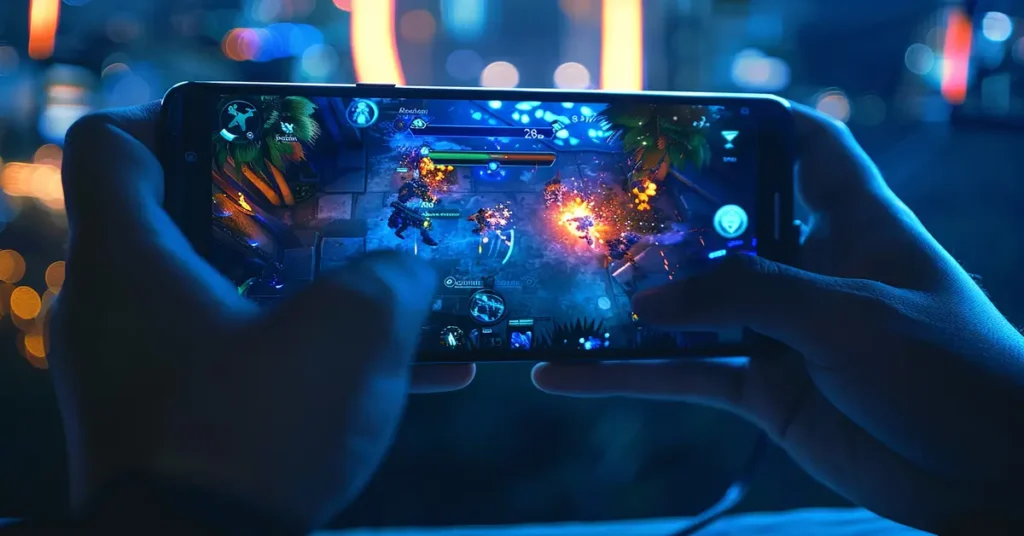The mobile gaming industry has transformed over the past decade, becoming a multi-billion-dollar sector that continues to grow exponentially. With millions of apps available and new games being launched daily, standing out in the crowded market is no easy feat. Successful mobile gaming strategies are often complex and multifaceted, involving a mix of innovative game design, effective marketing, strategic partnerships, and continuous engagement with players. This article explores several case studies of successful mobile gaming strategies, highlighting what made these games stand out and how their strategies can be applied to future mobile gaming ventures.
1. Clash of Clans: Building a Community Through Engagement
Overview
Clash of Clans, developed by Supercell, is one of the most iconic mobile games ever released. Launched in 2012, it quickly gained a massive following and became a benchmark for success in the mobile gaming world. The game combines base-building with strategic combat, allowing players to build their villages, train armies, and attack other players.
The Importance of User Retention and Engagement in the Mobile Gaming Industry
Key Strategies
1.1. Community Engagement and Clan System
One of the core strategies behind Clash of Clans’ success was its emphasis on community engagement. Supercell introduced the “Clan” feature, which allowed players to form groups, participate in clan wars, and collaborate. This social aspect encouraged players to stay engaged with the game and fostered a sense of belonging. Clans became a crucial part of the game’s ecosystem, driving both retention and virality.
1.2. Frequent Updates and Balance Changes
Supercell consistently updated Clash of Clans with new content, features, and balance changes. These updates kept the game fresh and exciting, addressing player feedback and introducing new mechanics. The company’s commitment to refining the game contributed to its long-term success.
1.3. Monetization Strategy
The game’s monetization strategy revolved around in-app purchases for in-game currency and items. Supercell’s approach was to offer value in exchange for money, allowing players to progress faster or acquire cosmetic items without making it a pay-to-win scenario. This balanced approach to monetization helped maintain player satisfaction while generating significant revenue.
Results
Clash of Clans achieved remarkable success, generating billions in revenue and establishing Supercell as a leading mobile game developer. Its emphasis on community, frequent updates, and balanced monetization strategy served as a model for other games in the industry.
2. Pokémon GO: Leveraging Augmented Reality and Brand Power
Overview
Released in 2016, Pokémon GO by Niantic, Inc., is a groundbreaking mobile game that combines augmented reality (AR) with the beloved Pokémon franchise. Players use their mobile devices to explore the real world, capture Pokémon, and participate in various in-game events.
Key Strategies
2.1. Augmented Reality Integration
Pokémon GO was one of the first successful AR games that brought a new level of immersion to mobile gaming. By blending virtual elements with the real world, Niantic created a unique and engaging experience that encouraged players to explore their surroundings. The innovative use of AR was a major factor in the game’s widespread appeal and success.
2.2. Strong Brand Association
The game capitalized on the global popularity of the Pokémon franchise. Leveraging the brand’s established fanbase, Niantic was able to attract millions of players from the start. The nostalgia associated with Pokémon, combined with the new AR gameplay, created a powerful draw for both long-time fans and new players.
2.3. Community Events and Partnerships
Niantic organized various community events, such as “Pokémon GO Fest” and “Community Days,” to keep players engaged and encourage social interaction. Additionally, partnerships with businesses and local landmarks created special in-game events and promotions, further driving player engagement and in-game purchases.
Results
Pokémon GO quickly became a cultural phenomenon, with over 500 million downloads in its first year. The game’s innovative use of AR, strong brand association, and community-focused events contributed to its massive success and ongoing popularity.
Monetization Strategies for Mobile Games: Maximizing Revenue through In-App Purchases, Ads, and More
3. Candy Crush Saga: Perfecting the Match-3 Formula
Overview
Candy Crush Saga, developed by King, is a highly successful match-3 puzzle game that has become a staple in mobile gaming. Launched in 2012, the game involves matching colourful candies to complete levels and progress through the game’s various stages.
Key Strategies
3.1. Simple Yet Addictive Gameplay
The game’s core mechanic is simple: match three or more candies of the same colour to clear them from the board. This straightforward gameplay is easy to understand but challenging to master, making it highly addictive. King perfected the match-3 formula, creating a game that appeals to a wide range of players.
3.2. Level Design and Progression
Candy Crush Saga features a vast array of levels with varying difficulties. The game’s progression system ensures that players are constantly challenged and motivated to keep playing. Regular updates with new levels and challenges keep the experience fresh and engaging.
3.3. Monetization and In-App Purchases
The game’s monetization strategy revolves around in-app purchases for extra moves, lives, and power-ups. King implemented a “freemium” model, allowing players to download and play the game for free while offering optional purchases to enhance the experience. The well-designed monetization system, combined with frequent updates, drove significant revenue.
Results
Candy Crush Saga achieved remarkable commercial success, generating billions in revenue and maintaining a strong player base. The game’s combination of addictive gameplay, well-designed levels, and effective monetization strategy set a standard for mobile puzzle games.
4. Among Us: Harnessing Social Dynamics and Virality

Overview
Released in 2018 by InnerSloth, Among Us is a multiplayer party game that gained massive popularity during the COVID-19 pandemic. The game involves players working together on a spaceship while trying to identify impostors among the crew.
Key Strategies
4.1. Social Deduction Mechanics
Among Us relies on social deduction, where players must communicate and use their wits to figure out who the impostors are. This mechanic fosters social interaction and teamwork, making the game highly engaging and replayable. The game’s design encourages players to strategize, deceive, and collaborate, creating a dynamic and entertaining experience.
4.2. Streamers and Viral Marketing
The game’s rise to fame was significantly boosted by its popularity among Twitch streamers and YouTube content creators. Influencers showcased the game’s fun and chaotic nature, driving massive interest and viral growth. The game’s simple graphics and easy accessibility made it appealing for content creators to play and share with their audiences.
4.3. Frequent Updates and Community Engagement
InnerSloth actively engaged with the community and provided regular updates to address feedback and add new content. The developers’ responsiveness to player feedback and their commitment to improving the game contributed to its sustained success.
Results
Among Us experienced a surge in popularity, particularly during the pandemic, with millions of active players and widespread recognition. The game’s success highlights the power of social dynamics, influencer marketing, and community engagement in driving mobile game success.
5. PUBG Mobile: Mastering Battle Royale on Mobile
Overview
PUBG Mobile, developed by PUBG Corporation and Tencent Games, is a mobile adaptation of the popular battle royale game PlayerUnknown’s Battlegrounds. Released in 2018, the game brings the intense, large-scale combat of the PC version to mobile devices.
Key Strategies
5.1. High-Quality Port of a Popular Game
PUBG Mobile successfully translated the core experience of the PC game to mobile platforms, maintaining high-quality graphics and gameplay. The adaptation ensured that players could enjoy the same battle royale experience on their smartphones, attracting fans of the original game as well as new players.
5.2. Global Expansion and Localization
The game’s global strategy involved extensive localization to cater to different regions. Tencent’s expertise in regional markets allowed PUBG Mobile to tailor content, events, and monetization strategies to local preferences, resulting in widespread adoption and success.
5.3. Regular Updates and Competitive Play
PUBG Mobile regularly updates the game with new content, events, and balance changes. The developers also introduced competitive play and esports events, fostering a dedicated player base and maintaining long-term engagement.
Results
PUBG Mobile became a major success in the mobile gaming industry, garnering millions of players worldwide and generating substantial revenue. The game’s success is attributed to its high-quality port, global strategy, and ongoing updates and competitive play.

The success stories of Clash of Clans, Pokémon GO, Candy Crush Saga, Among Us, and PUBG Mobile illustrate the diverse strategies that can lead to triumph in the mobile gaming industry. These case studies highlight the importance of community engagement, innovation, effective monetization, and leveraging brand power. As the mobile gaming landscape continues to evolve, understanding and applying these successful strategies will be crucial for developers aiming to make their mark in the industry. Whether through immersive gameplay, social dynamics, or strategic updates, the key to success lies in creating compelling experiences that resonate with players and keep them coming back for more.
Defining Target Audience and Understanding Their Preferences




